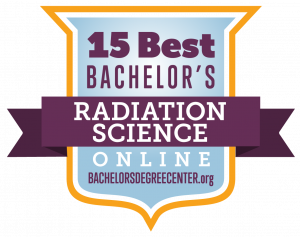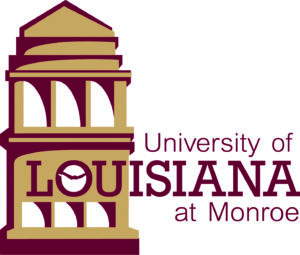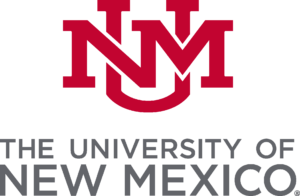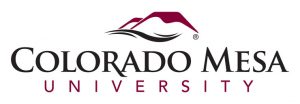
An online radiation therapy degree can help you advance your career. The main benefit of a radiation therapy degree is that it provides you with a great background and training. The knowledge, skills and attributes that you build during your education are important tools to have during your career in radiation therapy.
Radiation therapists work in hospitals and clinics, helping patients who need radiation therapy treatment. They are typically part of a team of doctors, nurses, technicians and other medical professionals who care for patients. In addition to providing treatment to patients, radiation therapists also help doctors understand the best way to treat each patient’s specific condition or illness. Radiation therapy degrees, online and on-campus, teach the skills that students need to do this work.
Methodology: Ranking the Best Radiation Science Degree Online Programs
To rank the best online radiation science degree programs, the editors at Bachelor’s Degree Center focused on reputable, accredited colleges and universities. Programs are ranked with data from IPEDS and Niche, including tuition, student reviews, and salary potential.
1. University of Iowa

The University of Iowa offers a BS in Radiation Sciences that is designed for students who are already a registered nuclear medicine tech or Radiologic tech. The University of Iowa’s radiation science degree online program requires 120 semester hours but awards credit for previous coursework and experience. This program offers five modalities from which to choose – Magnetic Resonance Imaging, Breast Imaging, Cardiovascular Interventional, Computed Tomography, or a multiple-modality option. Admission requires applicants to pass one of ARRT’s relevant exams.
The University of Iowa (U of I) is a space-grant higher learning institution that is Iowa’s oldest school, founded in 1847. The University of Iowa serves more than 31,150 postgraduate and undergraduate students from its 1800+ acre campus and online platform.
What We Like: U of I is recognized to be Iowa’s second-largest institution of higher learning.
Degree: BS in Radiation Sciences
2. Ohio State University

Ohio State University offers a BS in Radiologic Sciences that has been developed for those professionals who already have earned an Associate of Science degree (AS). Ohio State University’s radiation science degree online program is ranked among the leading national programs in terms of innovative education and leading research. Sample coursework for OSU’s completion degree in radiation science includes management principles for healthcare professionals and evidence-based practice, plus a practicum, to name a few.
Established as a mechanical/agricultural land grant college in 1870, Ohio State University now operates as a sea and space-grant, public ivy school, and the flagship campus in the state. Ohio State University serves more than 61,000 students each year.
What We Like: Ohio State University ranks among the top research schools that are publicly operated.
Degree: BS in Radiologic Sciences
3. Loma Linda University

Loma Linda University offers a BS in Radiation Sciences (BSRS) that is available entirely online, with start dates each semester. Applicants to Loma Linda University’s radiation science degree online program must hold an associate degree and select from an academic emphasis in special imaging, imaging informatics, education, administration, or science. Sample core classes include digital management in radiology, moral leadership, and writing for healthcare professionals, plus a senior portfolio.
Loma Linda University (LLU) is a private health sciences institution of higher education that was founded by the 7th Day Adventist Church in 1905. The campus in Loma Linda is home to the college, a church, and a K‑12 school. More than 3,300 postgraduate and undergraduate students attend classes online and on-campus each year.
What We Like: Loma Linda University offers more than 100 certificate and degree programs in nine colleges/schools.
Degree: BS in Radiation Sciences
4. University of Mississippi Medical Center

The University of Mississippi Medical Center offers an Advanced Standing BS in Radiologic Sciences designed for registered Radiologic Techs current in practice who wish to enhance their didactic skills, knowledge, and clinical skills. The University of Mississippi’s radiation science degree online program requires 34 credit units in classes that include legal and ethical issues in imaging science, clinical research methods, and advanced clinical practice skills, plus a directed study in the Radiologic Sciences, to name a few.
The University of Mississippi Medical Center was developed in the mid-1950s and operates as the health campus of Ole Miss – the only state academic medical center. The University of Mississippi Medical Center is organized into seven schools/colleges offering programming medicine, dentistry, and other health-related fields.
What We Like: The University of Mississippi Medical Center holds the distinction of having the only Level 2 trauma unit in Mississippi.
Degree: Advanced Standing BS in Radiologic Sciences
5. Kettering College

Kettering College offers a BS in Health Science — Advanced Imaging Technology specialization that is among Ohio’s leading radiation science degree online programs. Applicants must hold an associate-level degree to be eligible for admission. This radiation science degree meets the structural educational requirements of ARRT certification. This advanced imaging degree offers tracks in computed tomography, vascular interventional technology, cardiovascular interventional technology, Magnetic Resonance Imaging – with the bachelor’s degree including two relevant areas. Clinical requirements can be arranged in a convenient location.
Kettering College was established in the 1960s. Kettering College’s suburban campus, next to Kettering Memorial hospital, serves approximately 700 students studying for health science degrees and certificate programs.
What We Like: Kettering College is a member school of the Seventh-day Adventist college and university system.
Degree: BS in Health Science: Advanced Imaging
6. University of Louisiana at Monroe

The University of Louisiana at Monroe offers a BS in Radiologic Technology (BSRT) designed for radiation science professionals who are registered Radiologic techs. The University of Louisiana’s radiation science degree online program’s coursework includes both general education and professional classes, including labs and a culminating capstone course. Students must complete 30-semester units at the University of Louisiana – Monroe.
The University of Louisiana at Monroe was chartered in the 1930s as a junior college but became a center for the state university several years later. The university’s urban campus covers more than 200 acres and, along with the distance-learning platform, serves more than 8,500 students each year.
What We Like: A variety of well-known politicians, entertainers, and athletes call ULM their alma mater.
Degree: BS in Radiologic Technology
7. Oregon Institute of Technology

Oregon Institute of Technology offers a BS in Radiologic Science that is available entirely online. This radiation science degree online program’s featured coursework includes imaging techniques, radiographic positioning, patient care, surgical, trauma & mobile radiography, health care management, cross-sectional anatomy, essentials of pathophysiology, and contrast media procedures, with a minimum of 45 of the required 199 quarter credits taken at Oregon Tech – include a radiation science externship, among others.
OIT was founded as a public polytechnic institution of higher education in the 1940s named Oregon Vocational School. Oregon Institute of Technology now operates as a multi-campus, space-grant school that serves nearly 5,500 students on its Klamath Falls campus and from its online platform.
What We Like: Oregon Institute of Technology was initially developed to re-educate/train veterans returning from World War II.
Degree: BS in Radiology
8. Georgia Southern University

Georgia Southern University offers a BS bridge program in Radiologic Science that students can finish entirely online. Georgia Southern University’s radiation science degree online program requires applicants to be ARRT, NMTCB, or RDMS certified. This bachelor’s completion program in radiation science from Georgia Southern University offers degree candidates two academic tracks – nonclinical and clinical tracks. This degree from Georgia Southern University prepares grads for careers as nuclear medicine technologists, radiation therapists, and product specialists, to name a few.
GSU — Armstrong campus was originally a junior college that was founded in 1935. Georgia Southern University is organized into eight colleges and schools serving more than 26,000 students across all campuses in Georgia.
What We Like: The Armstrong campus covers more than 250 acres, with nearly 1,500 students living on campus.
Degree: BS IN Radiologic Science Bridge
9. East Tennessee State University

East Tennessee State University offers a BS in Radiologic Science designed for working radiography professionals who have already earned an Associate of Applied Science or Associate of Science degree. Required core classes for East Tennessee State University’s radiation science degree online program include research in allied health radiographic pathology, digital imaging, and information management for allied health professionals, to name a few.
Established in 1911 as a public university for teacher’s training, East Tennessee State University is now a space-grant research school with multiple campuses in the state. With more than 14,000 students attending classes on campus and online, East Tennessee State University is recognized by Tennessee’s fourth-largest university.
What We Like: ETSU’s College of Medicine often ranks among the top programs for rural medicine and education programs in primary medicine.
Degree: BS in Radiologic Science
10. University of New Mexico

The University of New Mexico offers a BS in Radiologic Science (BSRS) Medical Imaging that is among the leading New Mexicoradiation science degree online programs. UNM’s radiation science degree program can be completed as a part-time or full-time student, with the flexibility required by working learners. Featured classes for UM’s undergraduate medical imaging plan include an introduction to research and imaging, cross-sectional pathology, anatomy, health ethics and diversity, and interpersonal communication, to name a few.
The University of New Mexico is a multiple-campus public university that was founded in the late-1880s before New Mexico reached statehood. More than 25,000 postgraduate and undergraduate students attend classes on UMN’s campuses and online platform each year.
What We Like: The main campus in Albuquerque covers more than 500 urban acres.
Degree: BS in Radiologic Sciences
11. Nebraska Methodist College of Nursing & Allied Health

Nebraska Methodist College of Nursing & Allied Health offers a BS in Imaging Sciences that is designed for students who already hold an ARRT license. Nebraska Methodist College’s radiation science degree online program offers specialization tracks in Mammography, Magnetic Resonance Imaging (MRI), or Computed Tomography. Graduates are required to pass a national registry exam administered by ARRT plan an exam in the chosen specialty. In addition to a clinical practicum, students take classes in radiographic procedures and pathology and radiographic imaging, among others.
Nebraska Methodist College of Nursing & Allied Health is a private school that was founded in the 1890s by the Methodist Church. Nebraska Methodist College offers its 1,000+ students a variety of health care degrees at various education levels.
What We Like: Nebraska Methodist College’s campus is located in Omaha.
Degree: BS in Imaging Sciences
12. Cambridge College

Cambridge College of Healthcare & Technology offers a BS in Radiologic Science that has been developed specifically for Radiologic Technologists who currently hold an associate degree and an RT license. Cambridge Institute’s radiation science degree online program includes these featured classes – sectional anatomy, health care law and compliance, quality management, and pathophysiology, plus a professional capstone, to name a few. Cambridge College’s program requires students to complete 120 semester hours.
Cambridge College of Healthcare & Technology is a professional school with several campuses across two southern states. Cambridge College is multi-accredited, including the Accrediting Bureau of Health Education Schools, as well as other related accrediting healthcare affiliations.
What We Like: Cambridge College of Healthcare & Technology is proud to support the many communities in which it operates educational facilities.
Degree: BS in Radiologic Science
13. Kent State University

Kent State University offers a bachelor’s degree In Radiologic And Imaging Sciences – with an optional academic concentration in Computed Tomography (CT) or Magnetic Resonance Imaging (MRI), that is available 100% online for those seeking a completion degree path. Applicants to Kent State’s radiation science degree online program are required to hold an active credential and a degree from a JRCERT accredited program. This online degree allows students to complete coursework in as few as nine months – all online and affordable.
Founded in 1910, Kent State University now operates as a multiple-campus institution of higher education and space-grant school. With seven campuses in northeastern Ohio, Kent State serves more than 35,550 undergraduate and postgraduate students each year.
What We Like: Kent State is recognized to be the state’s 3rd-largest public university.
Degree: Bachelor’s in Radiologic and Imaging Sciences
14. Colorado Mesa University

Colorado Mesa University offers a Bachelor of Applied Science (BAS) in Radiologic Science that has received JRCERT accreditation (since 1973) and is available 100% online. Colorado Mesa University’s radiation science degree online program offers an academic path in Magnetic Resonance Imaging (MRI) or Computed Tomography (CT). Featured classes for this undergraduate degree from Colorado Mesa University include anatomy and physiology, pathophysiology, health, and wellness, plus a clinical component, to name a few.
Colorado Mesa University (CMU) was founded as a junior college in the mid-1920s and now operates as a space-grant institution of higher learning with several campuses in Grand Junction and a regional campus in Montrose.
What We Like: Nearly 10,000 undergraduate and postgraduate students attend classes offered by Colorado Mesa University on-campus and online.
Degree: BAS in Radiologic Science
15. Clarion University of Pennsylvania

Clarion University of Pennsylvania offers a BS in Medical Imaging Sciences that offers degree candidates to concentrations – ultrasound (sonography) or radiologic technology. Clarion University’s radiation science degree online program is available completely online, with 120 total credit units required to earn the undergraduate degree. Featured classes for this undergraduate degree in radiation science include radiologic physics (with lab), introduction to health care management, radiographic imaging, plus a leadership capstone course.
Clarion University of Pennsylvania is a member of the PASSHE system. The university was established in the 1860s. The online platform and rural campus in Clarion serve more than 4,200 students each year.
What We Like: Clarion University maintains educational facilities in Pittsburgh and Oil City in addition to the main campus in Clarion.
Degree: BS in Medical Imaging Sciences
Why Should I Get my Radiation Therapy Degree Online?
Can you get a radiation therapy degree online? Absolutely. In fact, you may find a lot of benefits to earning your radiation therapy degree online.
But what about online radiation therapy degrees? Can a radiation therapy online degree provide extra benefits? Yes, it absolutely can.
When you earn a radiation therapy degree online, you’ll find some benefits that you wouldn’t get from a traditional degree. For example, it’s a flexible option that allows you to work while you study. Not every student can take time away from their lives and careers to pursue a degree. By earning a radiation therapy degree online, a busy student can have both.
An online radiation therapy degree can also let you save time and money. You won’t have to travel to class or drive back and forth between your home and campus.
A radiation therapy online degree may also come with accelerated options. Accelerated degrees require the same amount of coursework, but students can earn those degrees faster.
And of course, your online radiation therapy degree will offer the same quality education as on-campus courses. Some students worry that online radiation therapy degrees won’t provide the same quality as their on-campus counterparts. However, these degrees use the same course materials and have the same high standards as degrees that are taught on campus.
Is Accreditation Important in an Online Radiation Science Degree?
Should you look for accredited radiation therapy programs? What about accredited schools?
Yes, when it comes to radiation therapy, accredited schools matter. In fact, accreditation matters with any degree. For accredited radiation therapy schools, look for two things: school accreditation and program accreditation.
Accreditation is an official process that ensures a school or program meets certain educational standards. When a school has accreditation, it means that its students are getting a worthwhile education. The US has several accrediting bodies. You can look up a school’s accreditation status online.
On top of school accreditation, some individual programs — like radiation therapy programs — can also be accredited.
In the United States, accreditation comes from the Joint Review Committee on Education in Radiologic Technology (JRCERT). JRCERT-accredited radiation therapy programs meet high standards.
Accreditation covers all aspects of a program and school: curriculum, faculty, facilities, and student services. It evaluates what the program teaches and whether the education stays worthwhile and up to date. Accredited schools are held accountable for their programs and how those programs are implemented. This way, students stay safe from fraud.
What is Medical Radiation Science and Therapy?
Of course, if you’re asking “Why get a degree in radiation therapy?” then you may also have another important question: What is medical radiation science? In the medical field, radiation science is used in two main ways: medical imaging and radiation treatment.
Medical imaging provides a way to photograph the inside of the body. It has become extremely important for diagnosing diseases and injuries. For example, X‑rays can determine if a patient has broken a bone or developed arthritis. An ultrasound can show the progression of a pregnancy.
These are just a couple of examples, but the medical world has many others. Medical imaging uses all kinds of processes and machinery. Medical imaging specialists operate these machines. Thanks to their training, they understand how the technology works.
In addition to medical imaging, radiation is also used for treatment. Doctors often prescribe radiation therapy for cancer patients, either as an alternative to chemotherapy or as an addition to it. Radiation therapy works by damaging or killing cancer cells. Radiation therapy technologists are the experts who run the radiation machinery. They also help patients prepare for their treatment, and they can answer questions.
Related Rankings:
25 Best Bachelor’s in Radiation Science
